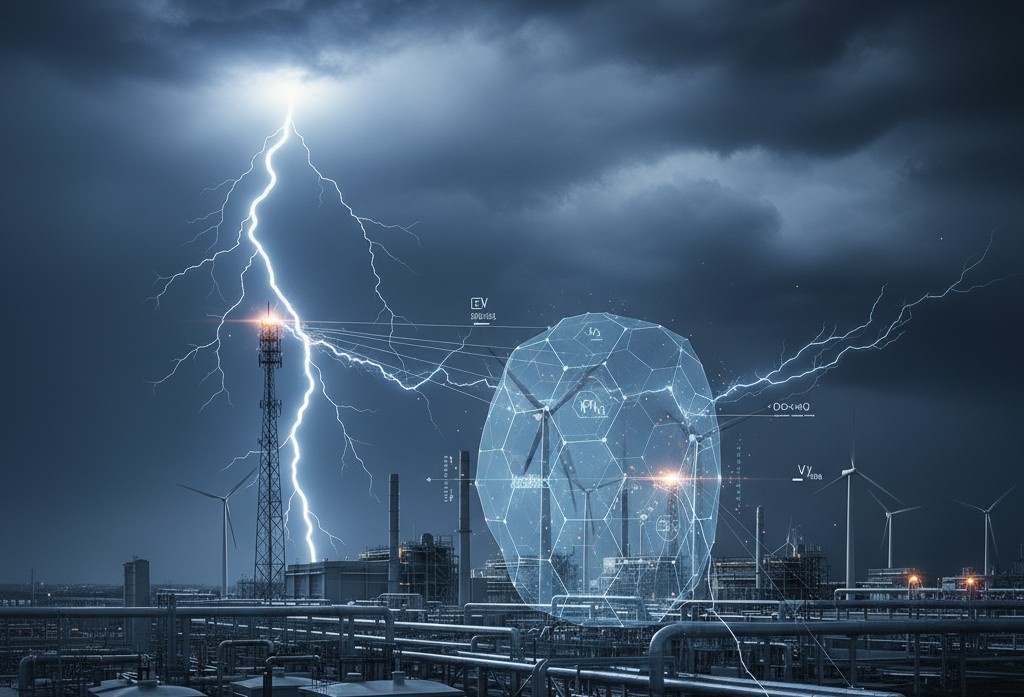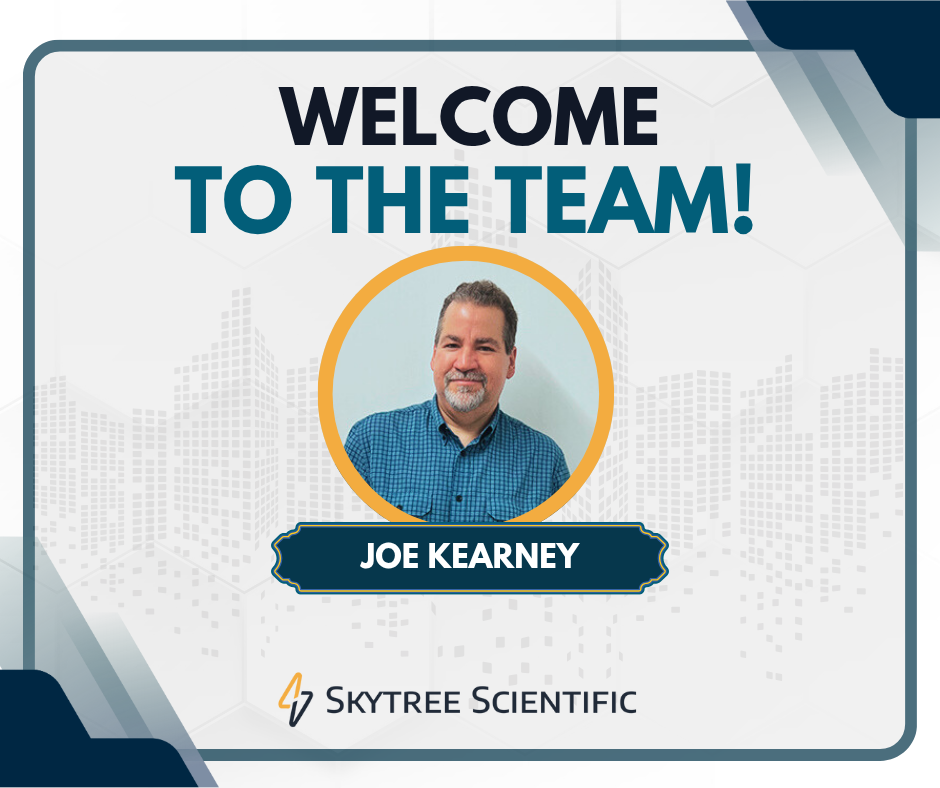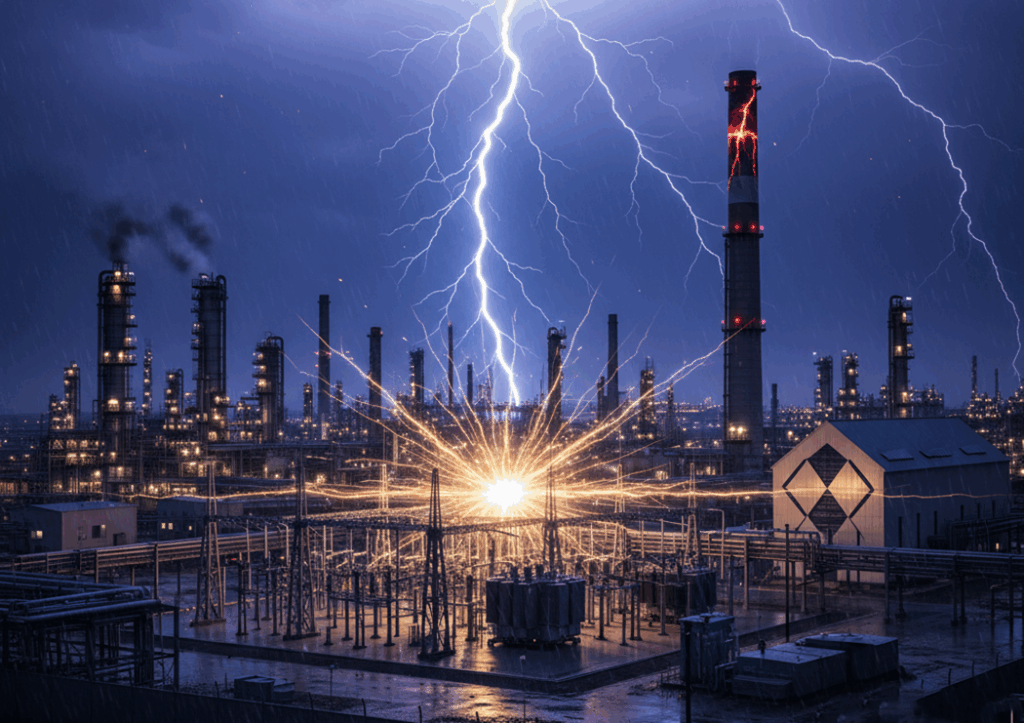Lightning safety protects uptime, safeguards lives, and stabilizes budgets across critical infrastructure. Unchecked storms can disrupt power, communications, water, aviation, rail, and data centers in minutes. Lightning safety requires disciplined planning, rigorous inspection, and documentation that stands up to regulators, insurers, and boards. Every strike tests weak grounding, uneven bonding, or aging surge devices. Smart operators raise the bar through layered protection, clear protocols, and consistent training that keeps crews alert under pressure. Lightning safety done well shortens outages, reduces claims, and preserves public trust.
Comprehensive lightning safety protocols
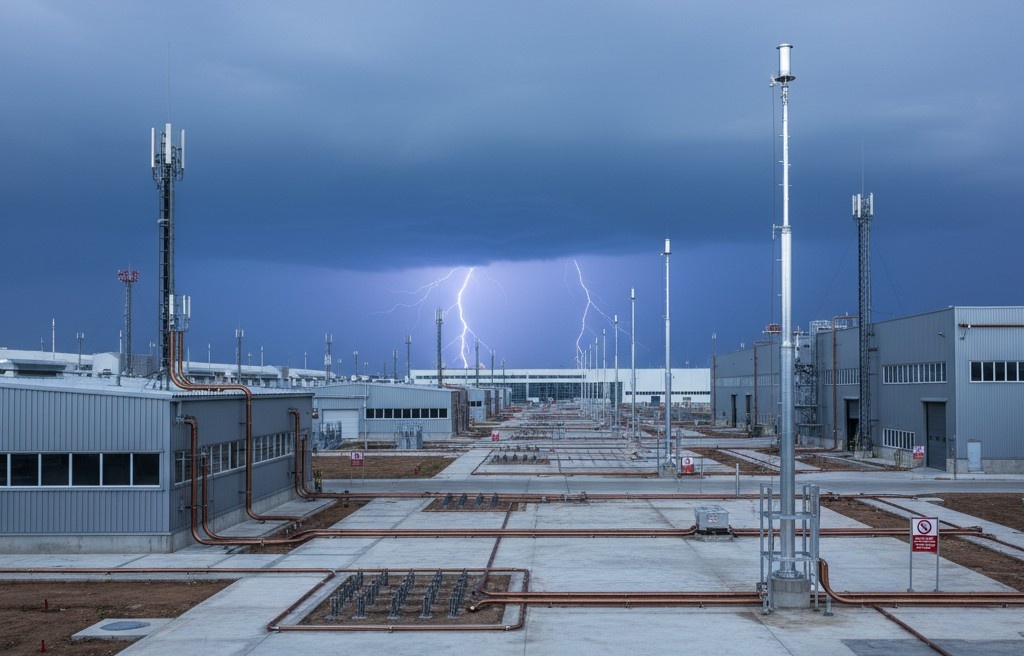
Lightning safety protocols must combine design, operations, and maintenance into a single living program. A robust program begins with site surveys, continues through design documentation, and closes the loop with periodic verification. Lightning safety hinges on a few fundamentals that do not change with trend cycles or tech buzzwords.
- Air terminals placed to match structure geometry and exposure
- Low-impedance down conductors with short, direct runs
- Equipotential bonding that removes dangerous potential differences
- Grounding arrays measured for resistance and seasonal variation
- Surge protection coordinated at service entrances and critical panels
- Lightning counters and incident logs tied to maintenance action
- Training that explains when work stops and where people shelter
Every protocol should map roles, triggers, notifications, and post-incident checks. Lightning safety improves when logs capture every activation, inspection, replacement, and fault. Over time, this record creates the feedback loop that makes lightning safety predictable and auditable.
Insurance Considerations for Lightning Safety and Claim Reduction

Lightning safety and insurance sit on the same balance sheet. Carriers want proof that lightning safety measures match site risk. Documentation affects premiums, exclusions, and payout velocity after storms. The path to fewer disputes is straightforward.
Lightning safety plans should show compliant grounding and bonding, coordinated surge pathways, inspection dates, and parts lifecycle history. Carriers look for lightning safety evidence that high-risk assets receive priority upgrades and follow-up testing after close strikes. Data that links lightning safety controls to loss trends strengthens rate negotiations. When boards see fewer outages and faster recoveries, lightning safety earns budget protection even in lean years.
Government Guidelines for Lightning Safety and Emergency Response

Public guidance frames lightning safety for outdoor work, stadiums, transit hubs, and public buildings. Lightning safety plans at government sites tie alerts to action. Crews need a lightning safety checklist that triggers when thunder is audible or alerts reach a threshold. Shelter standards matter. Hard-topped vehicles and fully enclosed buildings rank above awnings or open sheds. For field teams, lightning safety briefings at the start of shifts cut confusion when weather shifts quickly. Regular drills can move lightning safety from parchment to muscle memory.
Lightning Safety Best Practices for Critical Infrastructure Management
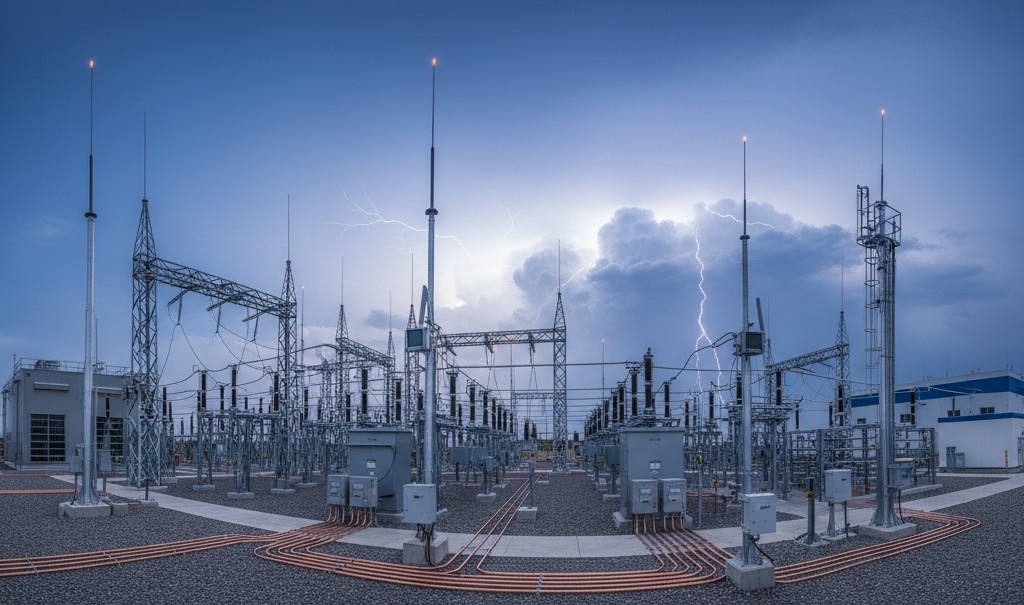
Lightning safety for large networks is best implemented through scalable, overlapping layers designed to tolerate failure. Begin by prioritizing high-value nodes. Critical facilities such as substations, network operation centers (NOCs), pumping stations, air traffic control towers, and large hospital campuses all demand superior lightning and surge protection. Lightning safety lives in the details:
- Short, straight down conductors reduce inductive rise
- Multiple parallel paths prevent overload
- Surge devices sized for realistic transients, with service-life tracking
- Bonding at entries, joints, racks, and pipe bridges
- Ground tests scheduled through wet and dry seasons
- Documentation tied to one source of truth for lightning safety governance
If a single node falls, cross-sector consequences can spin out. Lightning safety that anticipates cascade effects will always beat lightning safety that protects in isolation.
Role of Lightning Risk Assessment Software in Lightning Safety Programs
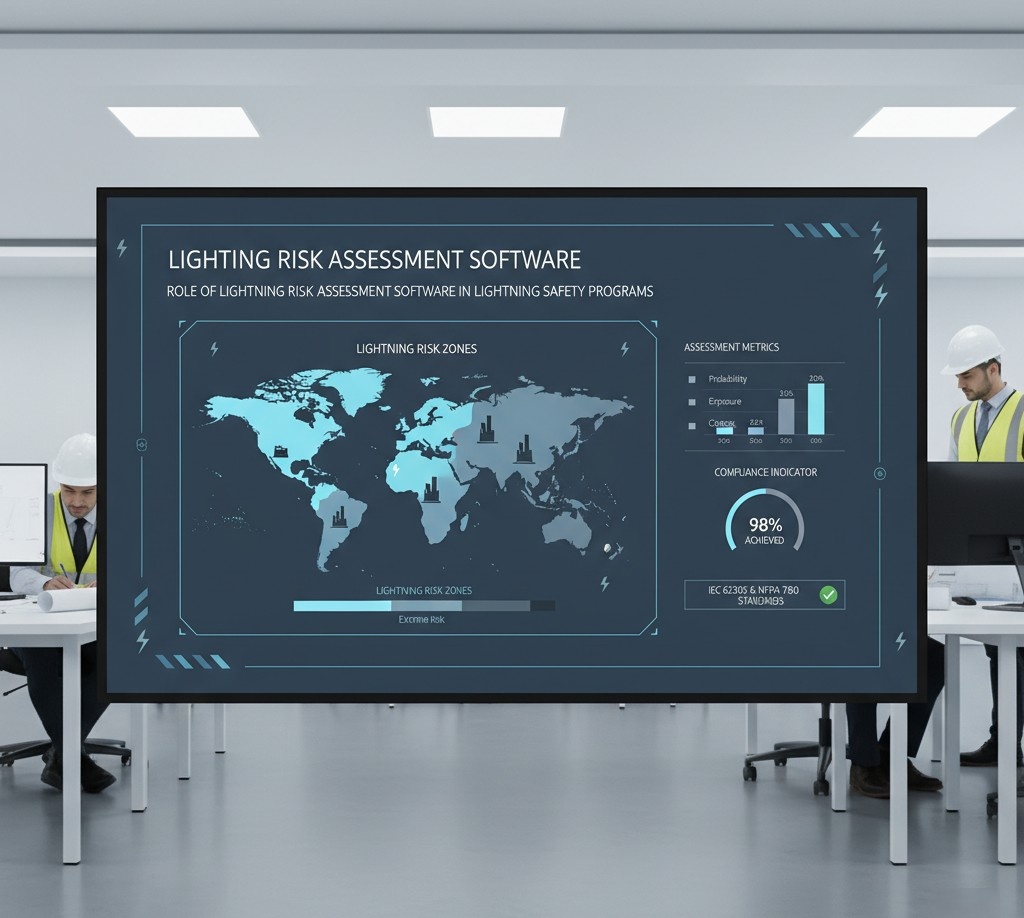
Modern lightning risk assessment software, including LRA Plus™, plays a pivotal role in elevating lightning safety programs for critical infrastructure. These advanced tools allow teams to move beyond manual, error-prone processes by delivering precise, standards-compliant lightning risk assessments and generating thorough, multilingual reports usable across diverse projects and regulatory environments.
Leveraging built-in assistants, LRA Plus™ provides recommendations based on user input and assessment findings, streamlining every stage, from risk analysis to compliance documentation, within a unified, digital workflow. By automating calculations according to internationally recognized standards and simplifying documentation for insurers and regulators, this software transforms lightning safety management into a more efficient, auditable, and globally scalable process while enabling decision-makers to focus on strategy and prevention rather than paperwork.
Ten Practical Lightning Safety Tips for Teams
Lightning safety measures are most effective when implemented in a structured sequence. These ten actions help facility owners, engineers, and operators reduce risk and maintain compliance.

Read more: Lightning Safety: Your Complete Guide to Industrial Protection and Risk Management Safety
Design Principles for Lightning Safety Systems
Lightning safety improves significantly when designs treat current paths as deliberate, low-impedance highways. Since bends raise inductance and tight radius loops increase voltage, lightning safety is enhanced when conductors run straight and short, are bonded at intersections, avoid sharp turns, and maintain separation from signal lines until intentional bonding occurs. Furthermore, mesh grounding around building perimeters helps reduce step and touch potential.
Surge coordination should follow a cascade: a device at the service entrance, then another at distribution panels, and finally protection at sensitive loads. Lightning safety truly thrives when this protective cascade is properly sized, documented, and regularly tested.
Lightning Safety Operational and Maintenance Programs
Lightning safety programs often fail when maintenance lags because surge protective devices (SPDs) age silently, connections loosen, and corrosion grows out of sight. To counteract this, you should build a comprehensive maintenance calendar that your Computerized Maintenance Management System (CMMS) enforces, using it to track the service life of your SPDs, monitor ground resistance, perform bonding checks, and inspect the integrity of all enclosures.
After major storms, it’s crucial to schedule targeted inspections specifically at high-exposure nodes, as effective lightning safety means anticipating failure modes and replacing components before they fail. Furthermore, keep a sufficient inventory of spare SPDs and connectors on hand to significantly shorten downtime following a severe storm event.
Training and Drills for Lightning Safety Readiness
Humans are the critical factor that carries lightning safety across the finish line. Every new hire orientation must thoroughly cover storm recognition, alert thresholds, designated shelters, and safe shutdown procedures.
To ensure readiness, quarterly drills should be conducted to rehearse a storm’s arrival, from the initial alert through to the final “all-clear.” Supervisors should require consistent scripts to standardize language and timing during these critical events. Lightning safety is significantly elevated when everyone knows exactly where to go, who calls the operational stop, and what equipment gets powered down first.
Construction Phase Lightning Safety Measures
During construction, temporary power, cranes, scaffolds, and open steel change the exposure profile. Lightning safety for construction sites calls for interim grounding plans, temporary bonding, and surge protection for site networks. Tower cranes and tall formwork require clear pause rules when alerts reach thresholds. Lightning safety signage near time clocks, break areas, and staging yards reminds crews what to do when thunder starts. Keep radios charged and a backup horn ready in case of power loss.
Lightning Safety Insights for Data Centers and Telecom Networks
These environments push lightning safety to the limit. Redundant feeds do not help if a single transient trips both sides of an A and B path. Bonding across racks, trays, and ladder systems improves lightning safety where high-speed links meet power gear.
Careful separation between power and data, with planned cross-bonds, reduces ground loops and noise. Surge protection must cover chilled water controls, building management systems, and rooftop antennas. Lightning safety at these sites depends on strict configuration control and disciplined change management so protection gaps do not creep in.
Transportation Infrastructure Lightning Safety Guidelines
Lightning safety at transportation hubs must cover radar, guidance lighting, signals, and passenger areas. Runway lighting circuits, signal bungalows, and wayside cabinets require surge coordination and robust bonding. Passenger shelters should qualify as safe structures with proper metallic continuity and grounding. Lightning safety plans for these hubs should include communications that reach contractors, tenants, and concession operators, not just the facility owner’s staff.
Water and Wastewater Lightning Safety Strategies
Lightning safety protocols for treatment plants and pump stations prevents environmental incidents and public health risks. Variable frequency drives, PLCs, and level sensors suffer when transient energy slips past surge layers. Bonding across pipe bridges and tank farms keeps potential differences low during strikes. Grounding grids around large basins and generator yards can strengthen lightning safety, especially where soil resistivity shifts across seasons.
Lightning Safety Protocols in Healthcare Facilities
Hospitals, clinics, and laboratories treat power quality as life-critical—because it is. Therefore, lightning safety measures must be robust enough to prevent nuisance trips on emergency power and effectively protect sensitive imaging equipment and life support systems. This includes ensuring that backup generators start reliably and are protected from transients that could disable their controls.
For these sensitive devices, the stability of the ground reference is paramount. Safety plans should clearly document the location of all isolation transformers and surge protective devices (SPDs), with maintenance schedules tied directly to clinical risk assessments. Finally, lightning safety drills must be synchronized with broader disaster plans, ensuring that patient movements and critical care procedures proceed without chaos during a weather emergency.
Auditing and Documentation for Lightning Safety Compliance
Internal audits keep lightning safety honest. Do not wait for regulators or insurers. Use checklists that match standards and site policy. Photograph every change. Track serial numbers for surge devices and grounding components. Store all drawings and results in a version-controlled repository. When a storm hits, lightning safety evidence should be one click away for executives, regulators, and claim teams. That level of readiness transforms surprising weather into a manageable event.
How Skytree Scientific’s LRA Plus™ Advances Lightning Risk Assessments
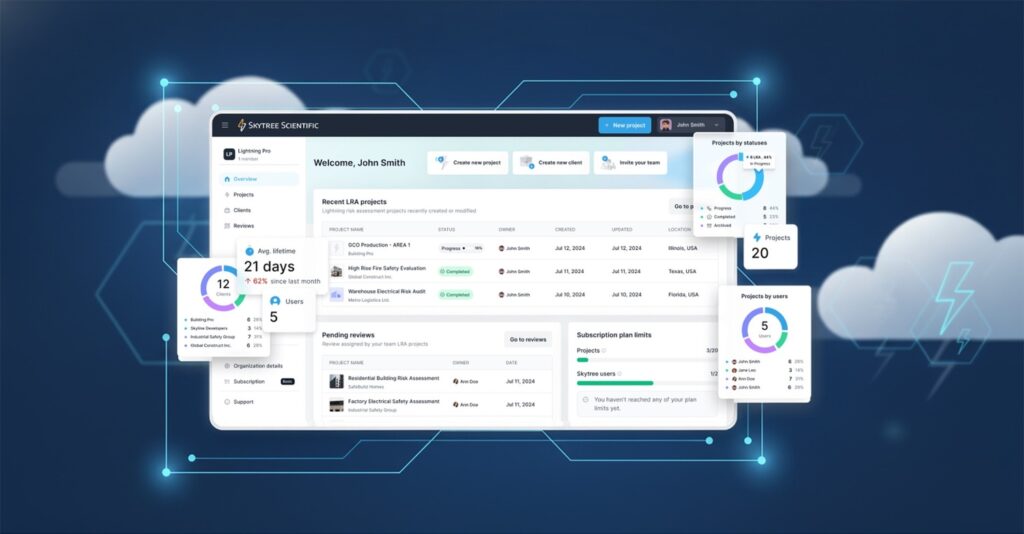
Skytree Scientific’s LRA Plus™ platform empowers teams to conduct thorough, standards-aligned lightning risk assessments and produce clear, actionable documentation. As Skytree Scientific does not sell equipment or installation services, the platform provides completely unbiased analysis and results.
The LRA Plus effectively translates user-supplied data into structured protection measure guidance based on recognized standards. This distinction significantly enhances governance, transparency, and consistency, particularly for organizations managing complex facilities or multi-site portfolios.
Common pitfalls that erode lightning safety
- Long, looping down conductors that add inductance
- Bonding gaps between metallic systems inside a building
- Surge devices placed without coordination or service-life tracking
- Ground measurements taken once and never repeated
- Outdated drawings that mislead contractors during repair work
- Training that never reaches subcontractors or shift workers
It is best to treat each pitfall as a trigger for a corrective action plan. Lightning safety grows stronger when failure modes are named and tracked.
Lightning Safety Procurement and Vendor Management
Procurement teams shape lightning safety through specification discipline. They should rely on certified components and clear acceptance tests. Require complete as-builts, test records, and serials for every lightning safety element, as well as demand end-of-warranty notifications and replacement schedules for surge devices. It is good practice to tie payments to complete documentation, not just installed hardware – a clean paper trail protects your investment and your people.
Setting measurable objectives for lightning safety
Goals will focus programs. Pick metrics that budget owners and field crews can rally around. Examples:
- Reduce transient-related equipment failures by half within twelve months
- Replace surge devices at end of service life with zero lapses
- Complete two lightning safety drills per year per site
- Cut response time from first alert to work stoppage in half
- Close all post-storm corrective actions within ten business days
Then publish the results, and celebrate the gains. Lightning safety improves when everyone sees progress.
The path forward
Lightning safety is not guesswork. It is a craft shaped by physics, standards, records, and repetition. With careful design, disciplined maintenance, trained people, and precise documentation, operators can harden critical infrastructure against severe weather. Software helps by bringing order to assessments and reports. Skytree Scientific’s LRA Plus contributes by generating structured, standards-aligned risk assessments based on user inputs and recognized codes. Field teams then turn plans into hardware, testing, and training. Treat lightning safety as an ongoing practice, and outages become shorter, claims become rarer, and communities gain confidence that the power stays on and the water stays clean when the sky lights up.

